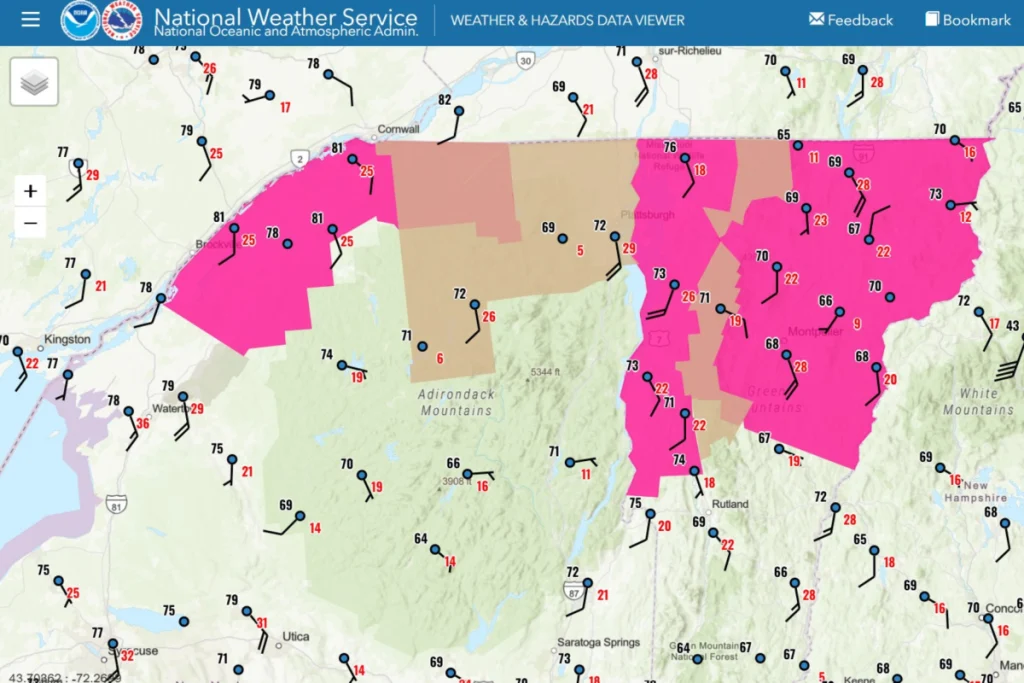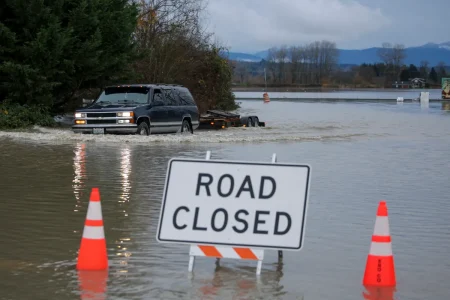Wind and Humidity Conditions Heighten Wildfire Concerns in Vermont and Northern New York
The specter of wildfire danger loomed over Vermont and portions of northern New York on Sunday as the National Weather Service (NWS) in Burlington issued red flag warnings throughout the region. These warnings came in response to a potentially dangerous combination of environmental factors: high winds with gusts reaching up to 35 miles per hour, unusually low relative humidity levels dropping to approximately 25 percent, and notably dry ground conditions. The convergence of these elements creates an environment where any spark could rapidly develop into an uncontrolled blaze, prompting meteorologists and emergency officials to issue urgent cautions to residents. While typically we associate severe wildfire threats with western states, this situation demonstrates how changing climate patterns have expanded fire risks into regions that historically faced fewer such dangers.
The significance of these red flag warnings extends beyond mere inconvenience—they signal genuine danger to communities across the affected area. When the NWS issues such warnings, they’re explicitly stating that current conditions could support dangerous or potentially uncontrollable wildfires that threaten lives, property, and critical infrastructure. Though the Northeast traditionally experiences fewer severe wildfires than western regions like California or Colorado, these warnings highlight shifting wildfire patterns that have begun to affect previously less vulnerable areas. Recent years have witnessed concerning increases in wildfire frequency and intensity across various parts of the country, resulting in substantial property damage, forced evacuations, and in some tragic instances, loss of life. These evolving patterns underscore why communities previously considered at lower risk must now take such warnings with the utmost seriousness.
The technical details behind Sunday’s warning paint a concerning picture for regional safety. The Burlington NWS office specified that sustained winds between 15-25 miles per hour, combined with stronger gusts approaching 35 mph, created perfect conditions for rapid fire spread. When coupled with relative humidity as low as 25 percent—far drier than normal for this region—even small ignition sources pose significant threats. Further compounding these concerns, the affected areas have experienced limited recent rainfall, leaving grasses, underbrush, and forest floor materials exceptionally dry and highly susceptible to catching fire. Under such conditions, even a small ember or spark can quickly develop into a significant wildfire, with winds potentially carrying embers considerable distances to ignite secondary fires ahead of the main blaze.
In response to these dangerous conditions, authorities implemented clear guidance for residents throughout Vermont and affected New York counties. Officials strongly advised against any form of open burning, including seemingly innocent activities like backyard grilling or recreational campfires. The NWS and local emergency management agencies emphasized avoiding anything that might produce sparks outdoors—meaning no fireworks, careful monitoring of equipment that could create sparks, and heightened vigilance regarding cigarette disposal or other common ignition sources. The New York State Division of Homeland Security & Emergency Services reinforced these concerns through social media warnings, specifically mentioning that “the combination of dry conditions and gusty winds will result in rapid fire spread” and explicitly stating that “outdoor burning is not recommended” in affected counties including St. Lawrence and Franklin.
While the formal red flag warning period was scheduled to conclude Sunday evening, meteorologists expressed concern that the dangerous conditions might persist longer. The NWS Burlington office noted that winds were “expected to continue increasing overnight into early Monday across western slopes of the Green Mountains and northern slopes of the Adirondacks,” potentially resulting in isolated power outages—which themselves could create additional fire hazards. This extended timeframe of potentially dangerous conditions means residents needed to maintain heightened awareness beyond just Sunday. The persistence of dry conditions combined with continued breezy weather means the elevated fire risk wouldn’t necessarily dissipate immediately when the formal warning period ended, requiring ongoing caution from community members.
Looking ahead, emergency management officials and meteorologists planned to continue closely monitoring weather patterns to determine if warning extensions would be necessary. Throughout the affected regions, fire authorities maintained heightened public communication efforts, regularly reminding residents about essential fire safety practices and the importance of avoiding activities that could spark blazes. Local residents and visitors were encouraged to stay informed through official NWS channels and local emergency management updates, particularly as conditions evolved. This situation serves as an important reminder that as climate patterns continue changing, communities previously less affected by wildfire dangers must adapt their preparedness measures and response capabilities to address these emerging threats. The red flag warnings in Vermont and northern New York represent not just an immediate safety concern, but a broader signal about changing environmental risk factors that increasingly affect regions across North America.















